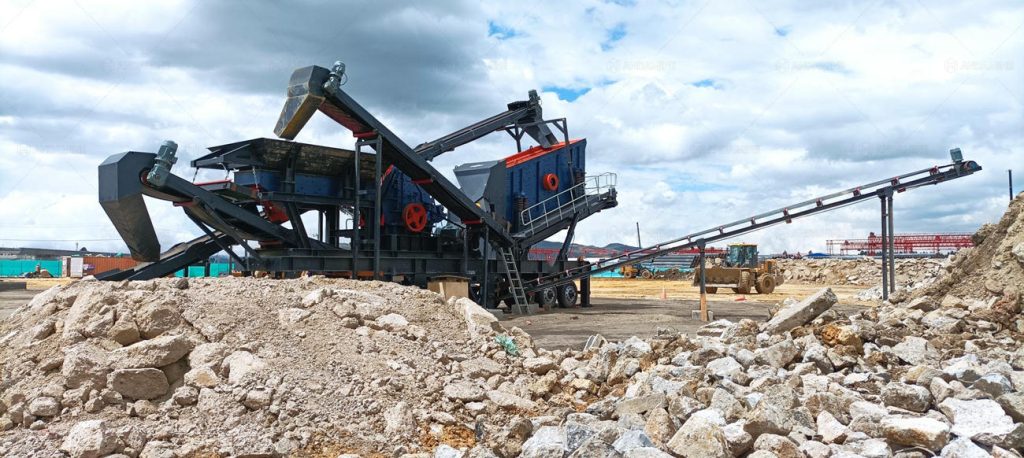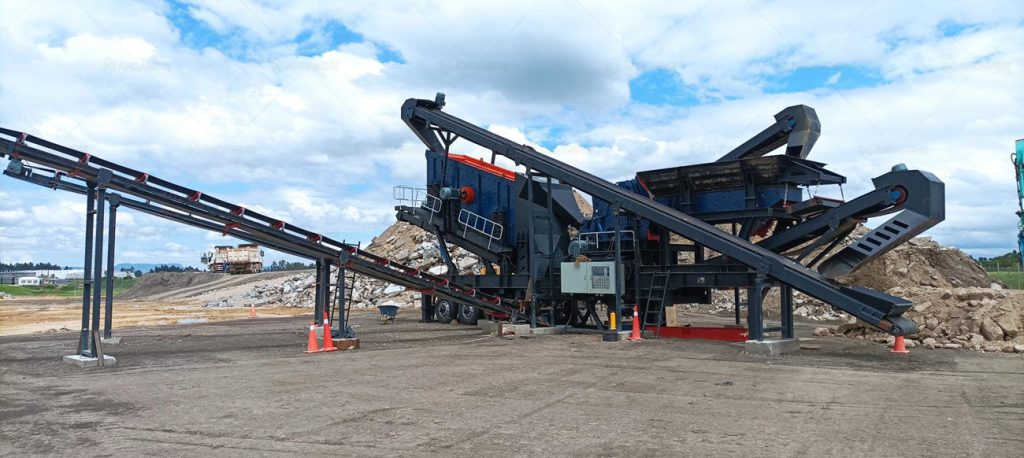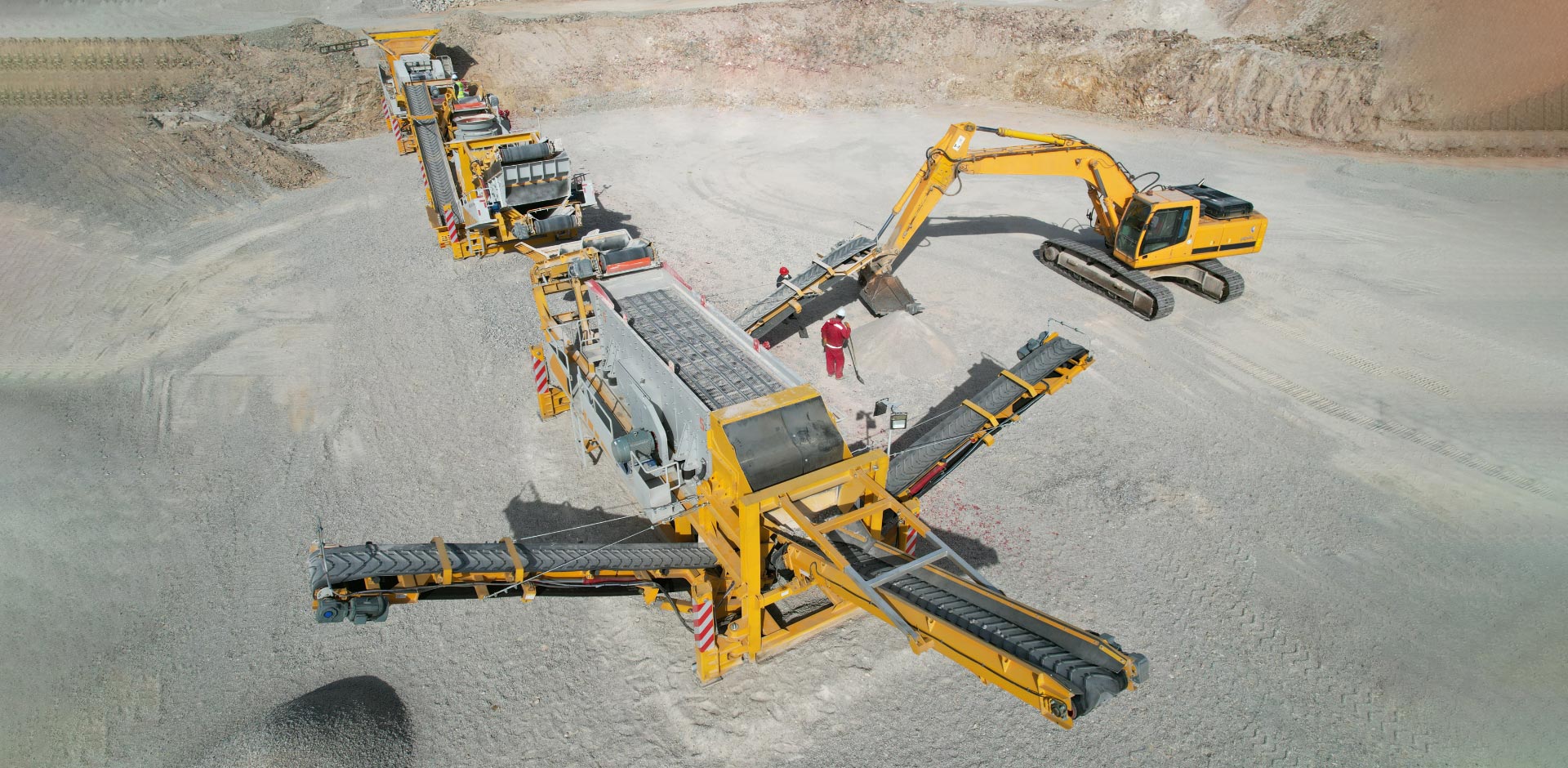The problem of handling debris from large construction projects has become more pressing in recent years, especially with the growing number of high-rise demolitions and urban renewal projects. One of the most efficient solutions available today is the construction waste crusher plant, which is designed to recycle debris into reusable aggregates while reducing the environmental impact of construction activities. A particularly important model is the 50t stationary construction waste crusher plant, which is widely applied in large-scale projects because of its stability, processing capacity, and reliability. But one question that many contractors, project managers, and investors often ask is: how long would it take for such a plant to process the waste generated from demolishing a ten-story building?

Understanding the Scale of Waste from a 10-Layer Building
To calculate the processing time, it is important first to understand the approximate volume of construction waste generated by a ten-layer building. A structure of this size typically produces a large volume of waste, including reinforced concrete, bricks, tiles, plaster, and other demolition materials. Depending on the construction method, the use of steel reinforcement, and the building footprint, the waste can reach tens of thousands of tons. Most of this debris requires careful concrete crushing, since concrete is the primary material in multistory structures. A construction waste crusher plant is specifically designed to handle this challenge, separating aggregates, reducing the size of rubble, and preparing materials for reuse in new projects.
The Role of a 50t Stationary Construction Waste Crusher Plant
The 50t stationary construction waste crusher plant has a processing capacity of approximately 50 tons per hour. Being stationary, it is usually installed in a fixed site where waste from the demolition area is transported for processing. This makes it especially suitable for large, long-term projects, as the equipment offers stable performance and continuous operation without the interruptions that sometimes occur with mobile units. Its strength lies in heavy-duty concrete crushing, transforming massive blocks of reinforced concrete into smaller, manageable aggregates. Because the plant is stationary, it is also often designed with advanced screening systems, dust suppression, and magnetic separation to ensure efficient recycling of construction waste.
Processing Time Estimate for a 10-Layer Building
If we assume that a ten-story building produces about 20,000 to 25,000 tons of debris, mostly consisting of concrete and masonry, then we can calculate how long the 50t plant would take to complete the task. Since the plant can handle 50 tons per hour, in a 10-hour workday it could process approximately 500 tons. Over a month, operating six days a week, the plant could process around 12,000 tons of waste. This means that it would take about two months of consistent operation for the 50t stationary construction waste crusher plant to completely finish processing the waste from a ten-story building. Of course, the exact duration would depend on factors such as working hours per day, the efficiency of material feeding, and the type of waste being crushed. Concrete reinforced with heavy steel bars takes longer to process than simple bricks or blocks, so real-world results may vary.

Advantages of Concrete Crushing in Stationary Plants
The key function of these plants lies in concrete crushing, which is essential for handling high-rise demolition waste. Crushing concrete reduces its volume significantly, making transportation and storage much easier. Furthermore, the crushed concrete can be reused as recycled aggregate for road base, subgrade filling, or even in new concrete mixtures. This recycling process not only helps reduce the overall cost of construction projects but also contributes to environmental sustainability by lowering the demand for natural aggregates. The 50t stationary construction waste crusher plant provides continuous and efficient crushing, ensuring that large-scale demolition projects such as a ten-story building can be managed without overwhelming delays.
Comparing Stationary and Mobile Solutions
While stationary plants provide consistent and large-scale solutions, many projects also consider the use of mobile impact crusher units. A mobile impact crusher is more flexible since it can be moved directly to the demolition site, reducing the cost and time associated with transporting waste to a stationary plant. Mobile crushers are particularly effective for smaller projects or sites with limited space. However, for processing the massive waste volume of a ten-story building, the stability and throughput of a 50t stationary construction waste crusher plant make it more efficient in the long run. Some projects even combine both types: using mobile impact crushers for on-site pre-crushing and then transporting the materials to a stationary facility for final processing and sorting.
Operational Considerations Affecting Time
Several practical factors affect how long it actually takes to process the waste. These include:
Feeding efficiency: If waste is delivered to the plant at a steady rate, the equipment can operate at full capacity. Delays in feeding reduce overall productivity.
Material composition: Pure concrete waste is easier to process compared to mixed waste containing wood, plastic, or metal, which may need to be separated first.
Working hours: Plants running two or three shifts per day can significantly shorten the processing timeline compared to single-shift operations.
Maintenance and downtime: Regular maintenance ensures consistent operation. Unexpected breakdowns can extend the time required to complete the project.
By optimizing these factors, the estimated two-month processing period for a ten-layer building’s debris could be shortened, making the operation more cost-effective.
Conclusion
The time it takes for a 50t stationary construction waste crusher plant to finish processing the waste from a ten-layer building depends on waste volume, plant capacity, and operational conditions. On average, such a plant would require around two months of steady operation to fully process 20,000 to 25,000 tons of debris, primarily through concrete crushing. While mobile solutions such as a mobile impact crusher provide flexibility for smaller projects, the stationary plant is better suited for handling the sheer scale of waste generated by high-rise demolitions. Choosing the right type of construction waste crusher plant is crucial not only for managing time but also for reducing costs and supporting sustainable construction practices. With proper planning, efficient feeding, and consistent operation, a 50t stationary plant can reliably turn the rubble of a ten-story building into valuable recycled aggregates.
